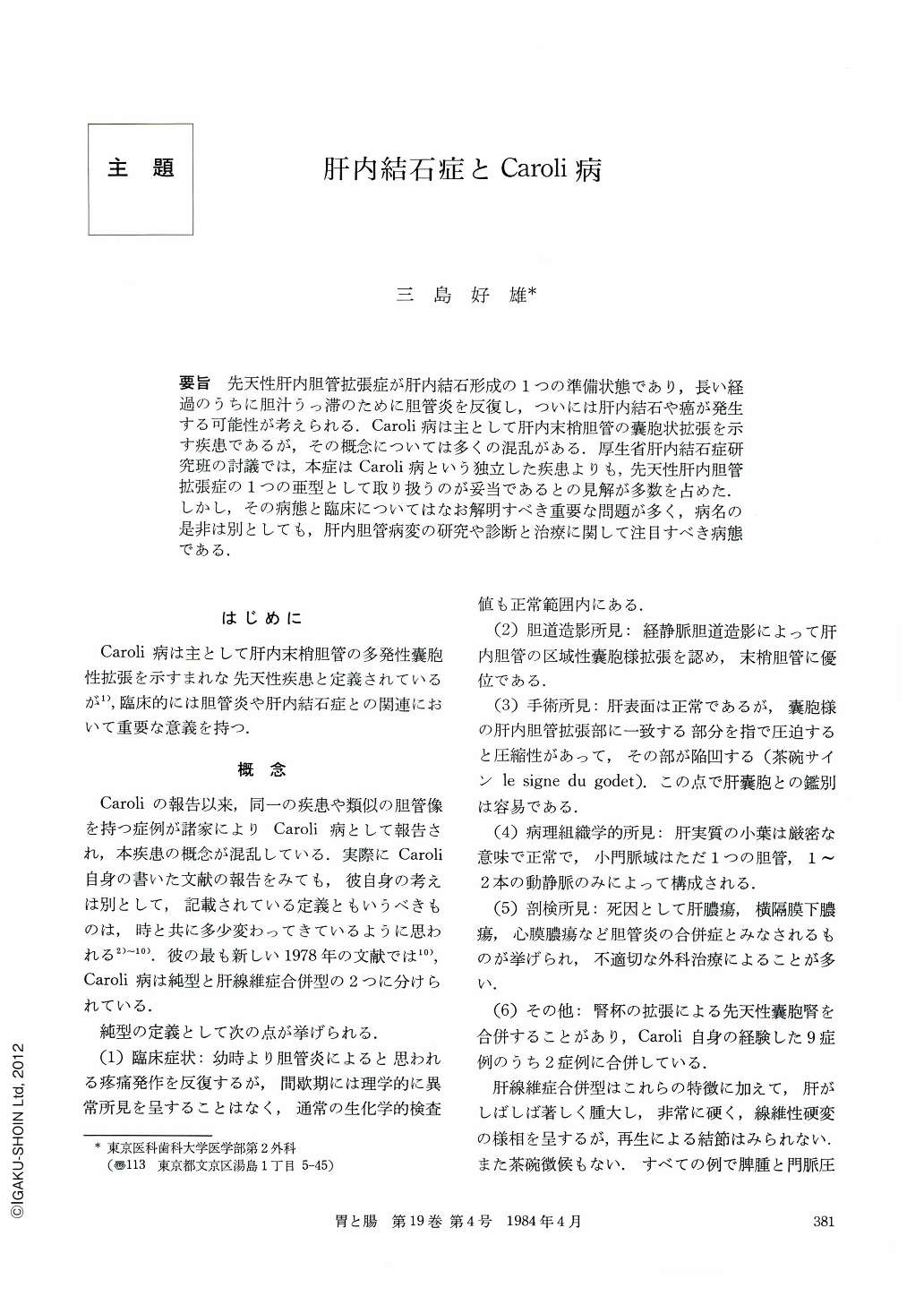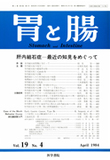Japanese
English
- 有料閲覧
- Abstract 文献概要
- 1ページ目 Look Inside
要旨 先天性肝内胆管拡張症が肝内結石形成の1つの準備状態であり,長い経過のうちに胆汁うっ滞のために胆管炎を反復し,ついには肝内結石や癌が発生する可能性が考えられる.Caroli病は主として肝内末梢胆管の囊胞状拡張を示す疾患であるが,その概念については多くの混乱がある.厚生省肝内結石症研究班の討議では,本症はCaroli病という独立した疾患よりも,先天性肝内胆管拡張症の1つの亜型として取り扱うのが妥当であるとの見解が多数を占めた.しかし,その病態と臨床についてはなお解明すべき重要な問題が多く,病名の是非は別としても,肝内胆管病変の研究や診断と治療に関して注目すべき病態である.
Caroli's disease is defined as a congenital segmental dilatations of the intrahepatic bile ducts. Caroli himself classified this disease into two forms: the pure type without hepatic fibrosis and the more common type with periportal fibrosis. Clinically, cholangitis from early childhood is the characteristics of Caroli's disease. In the former type, the intrahepatic duct dilatation is observed mainly in the peripheral part of the liver and resulting cysts may contain stones. Microscopically, the liver parenchym is quite normal. In the latter, the liver is cirrhotic and symptoms due to portal hypertension are always dominant. To make the diagnosis, the intravenous cholangiography is essential, but hepatic scans, transhepatic cholangiography, endoscopic cholangiography, and ultrasonography are also helpful. Hepatic lobectomy or choledochojejunal anastomosis is the usual procedure, along with removal of the stones.
Because there are some confusions as to its clinical definition, the Research Committee on Intrahepatic Stones, Ministry of Health and Welfare, Japan has concluded that Caroli's disease is not a real clinical entity but should be considered as a subtype of the congenital intrahepatic duct dilatations.

Copyright © 1984, Igaku-Shoin Ltd. All rights reserved.


